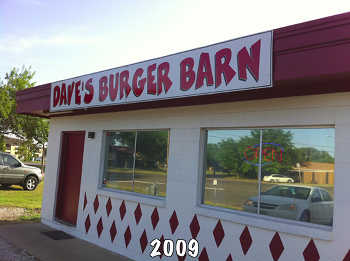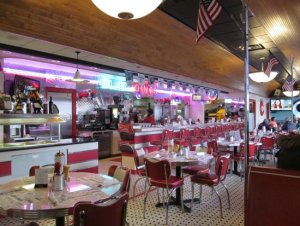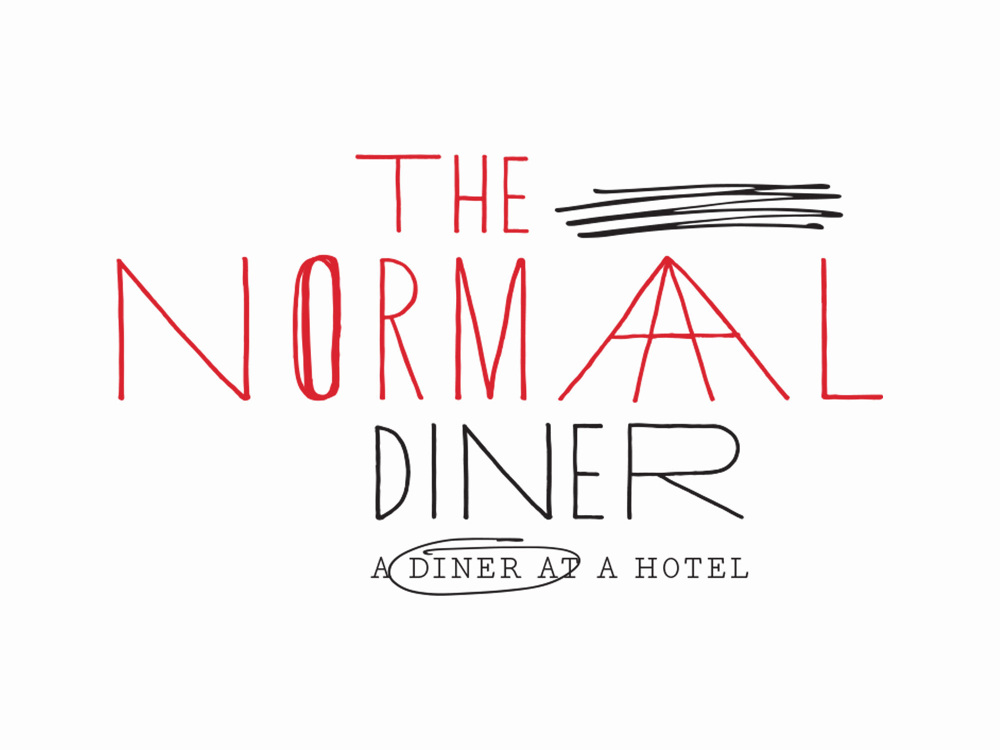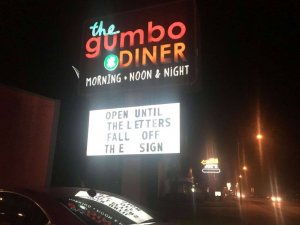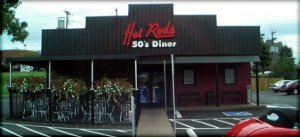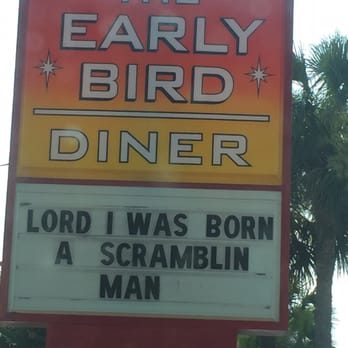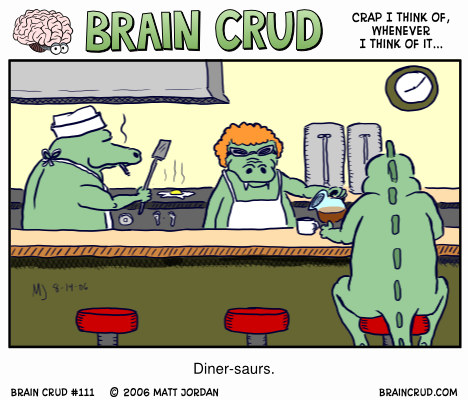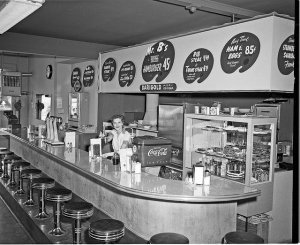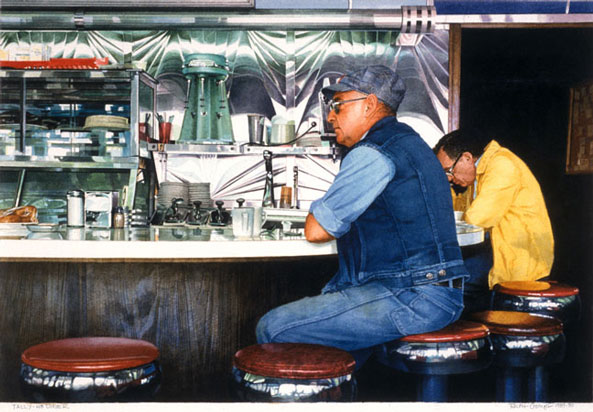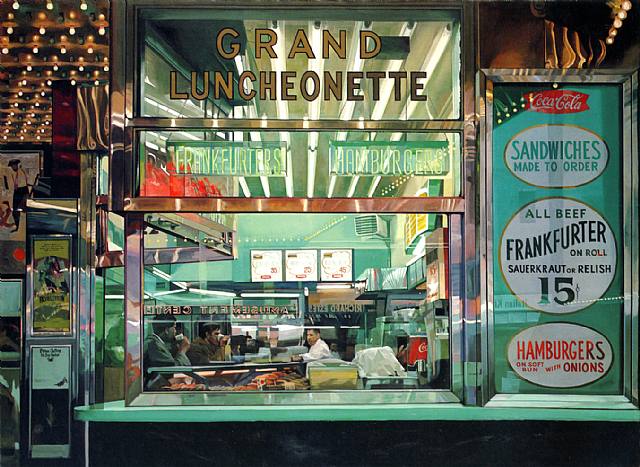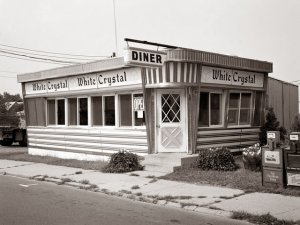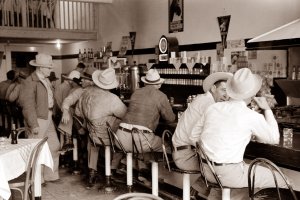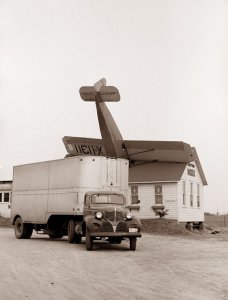You are using an out of date browser. It may not display this or other websites correctly.
You should upgrade or use an alternative browser.
You should upgrade or use an alternative browser.
The Vintage Diner
- Thread starter NancyNGA
- Start date
Aunt Bea
SF VIP
- Location
- Near Mount Pilot
Pappy
Living the Dream
Pappy
Living the Dream
Lunch Rooms - (before diners)
"In the first half of the 20th century there were some 'quick lunch' chains in existence, but they were the exception rather than the rule. Less desirable sites in cities and on Main Streets in smaller towns were populated with small independent eateries. Many lunch rooms ... occupied storefronts or freestanding one-story buildings of very basic construction. Often they were 'mom & pop' operations with one of the pair handling the cooking; the other running the food service side of things.
Most lunch rooms shared a basic floor plan in a standard storefront space 18 to 25 feet wide and 75 to 100 feet deep. About 2/3 to 3/4 of the space was devoted to the dining room, the rest making up the kitchen which was hidden behind a wall, partition, or just a curtain."
Armstrong, MO

"Usually seating would include both a counter and some tables, or booths along the side or arranged toward the back. Very narrow storefronts had counter seating only. "
Magnum, OK

Some only had a row of one armed chairs on the side.
Newark, NJ

"In the first half of the 20th century there were some 'quick lunch' chains in existence, but they were the exception rather than the rule. Less desirable sites in cities and on Main Streets in smaller towns were populated with small independent eateries. Many lunch rooms ... occupied storefronts or freestanding one-story buildings of very basic construction. Often they were 'mom & pop' operations with one of the pair handling the cooking; the other running the food service side of things.
Most lunch rooms shared a basic floor plan in a standard storefront space 18 to 25 feet wide and 75 to 100 feet deep. About 2/3 to 3/4 of the space was devoted to the dining room, the rest making up the kitchen which was hidden behind a wall, partition, or just a curtain."
Armstrong, MO

"Usually seating would include both a counter and some tables, or booths along the side or arranged toward the back. Very narrow storefronts had counter seating only. "
Magnum, OK

Some only had a row of one armed chairs on the side.
Newark, NJ

Aunt Bea
SF VIP
- Location
- Near Mount Pilot
First date!

Harvey Girls.


Harvey Girls.

Pappy
Living the Dream
Meanderer
Supreme Member
First date!

Harvey Girls.

Great picture, Bea! A touch of refinement...and the light of romance!
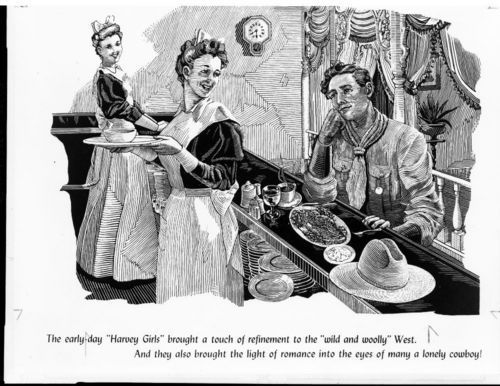
Aunt Bea
SF VIP
- Location
- Near Mount Pilot
They don't look so happy, do they? Not old enough yet, I guess. Great picture. Thanks Bea.First date!

Pappy
Living the Dream
Meanderer
Supreme Member
The Park Diner


Charlie and Francis Smith in 1946. The two brothers had just been mustered out of the war and were anxious to settle down. Charlie did the cooking and Francis became the counterman and general manager. Pictured above Waitstaff Debbie, Courtney and Mary


Charlie and Francis Smith in 1946. The two brothers had just been mustered out of the war and were anxious to settle down. Charlie did the cooking and Francis became the counterman and general manager. Pictured above Waitstaff Debbie, Courtney and Mary
James Gurney is an American artist and author best known for his illustrated book series Dinotopia, which is presented in the form of a 19th-century explorer’s journal from an island utopia cohabited by humans and dinosaurs. (The dinosaur Torvosaurus gurneyi was named in honor of Gurney in 2014.)
Tom's Diner
An oil on canvas painting by Ralph Goings, 44"x 62."
"Ralph Goings (b. 1928, Corning, California) has created 375 paintings in several diverse series of paintings throughout his career. His first series depicted pickup trucks in rural areas, and his second series, of diner interiors and still lifes, has been highly acclaimed. Goings’ new work has focused on small, detailed images of a few or single objects from the earlier diner still lifes. He works exclusively from 35mm color slides, projecting them onto his canvas."
[Is this cheating? ]
]

An oil on canvas painting by Ralph Goings, 44"x 62."
"Ralph Goings (b. 1928, Corning, California) has created 375 paintings in several diverse series of paintings throughout his career. His first series depicted pickup trucks in rural areas, and his second series, of diner interiors and still lifes, has been highly acclaimed. Goings’ new work has focused on small, detailed images of a few or single objects from the earlier diner still lifes. He works exclusively from 35mm color slides, projecting them onto his canvas."
[Is this cheating?

Last edited:
RadishRose
SF VIP
- Location
- Connecticut, USA


